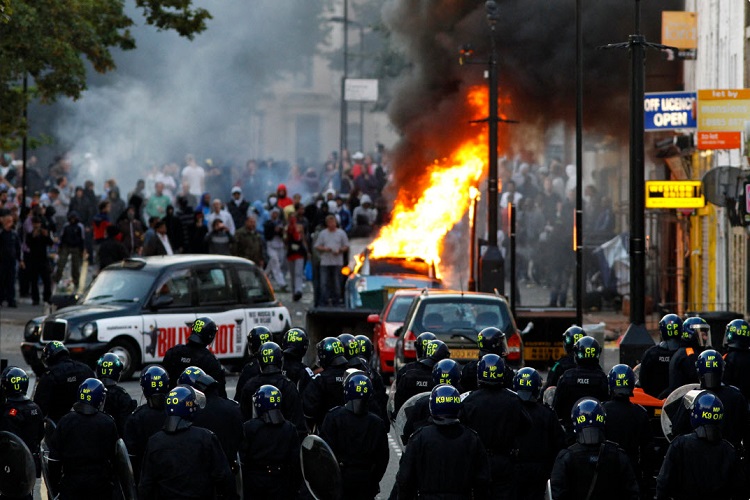Report sheds new light on the 2011 London Riots

A new report on the 2011 London Riots is launched today (Thursday 31 January 2019) at an event in Tottenham with panellists including Shadow Home Secretary Diane Abbott and Professor Stephen Reicher from the University of St Andrews.
The report is a summary of a three-year research project by a team of leading crowd specialists, including St Andrews social psychologists Professor Reicher and Dr Fergus Neville.
The research challenges the explanations of the riots given at the time: that they were organised by gangs, involved habitual criminals, and were organised by outsiders.
Instead it shows how deprivation and negative relations with police, largely generated by intensive stop and search policies, along with failure to engage with the community after the shooting of 29-year-old Mark Duggan, were central to how the violence started in Tottenham. Mark Duggan was shot and fatally wounded by police in Tottenham, North London, on 4 August 2011. His friend Marcus Knox-Hooke will also be on the panel at the report launch today.
The report says that after the shooting of Mark Duggan, violence spread to other areas where bodies of young people either identified with the rioters in Tottenham or else felt empowered by the events there to express pre-existing grievances against the police, against property or against authority.
 Professor Reicher (pictured) said: “Whenever riots occur, people argue that previous such events might have been bound up with social injustices and grievances, but that these riots are an exception – a simple outbreak of mindless violence by violent individuals.
Professor Reicher (pictured) said: “Whenever riots occur, people argue that previous such events might have been bound up with social injustices and grievances, but that these riots are an exception – a simple outbreak of mindless violence by violent individuals.
“This certainly happened in 2011, but our research shows that 2011 was no exception to the historical pattern. The riots arose out of deprivation and antagonism with the police. Unless we face up to this and make changes, riots will happen again.”
Dr Neville said: “One of the most important contributions of our research is to clarify how riots spread. It is traditionally thought this occurs through a process of so-called ‘contagion’: just seeing others riot makes observers more likely to take part in ‘copycat riots’.
“We show that this cannot explain where the riots spread to, and where they did not. Rather, we demonstrate that processes of identification and empowerment are central in waves of rioting. That is, people copy other rioters only when they see their own situation in the riot, when they see the rioters as people like themselves or else take confidence from previous riots that they can take on their own opponents.”
Issued by the University of St Andrews Communications Office.